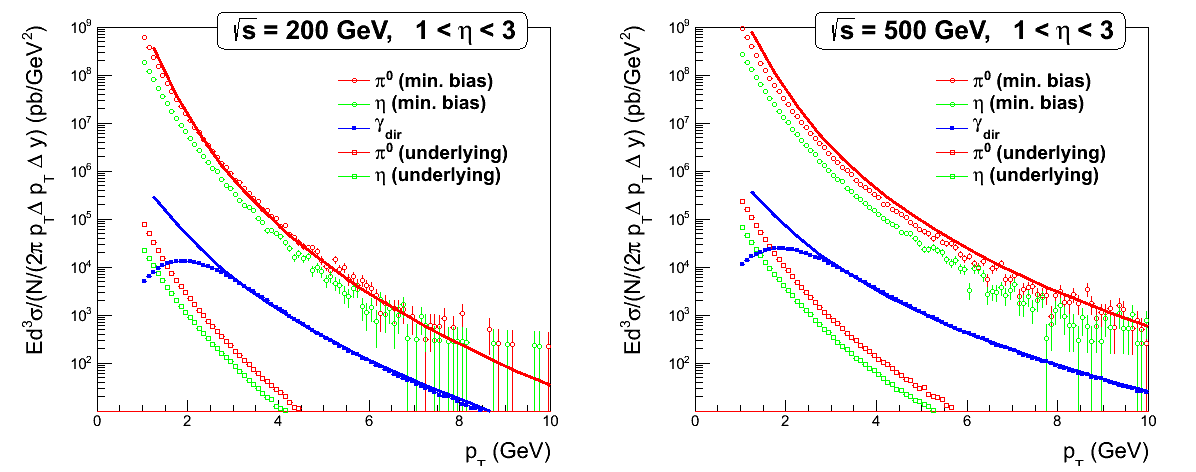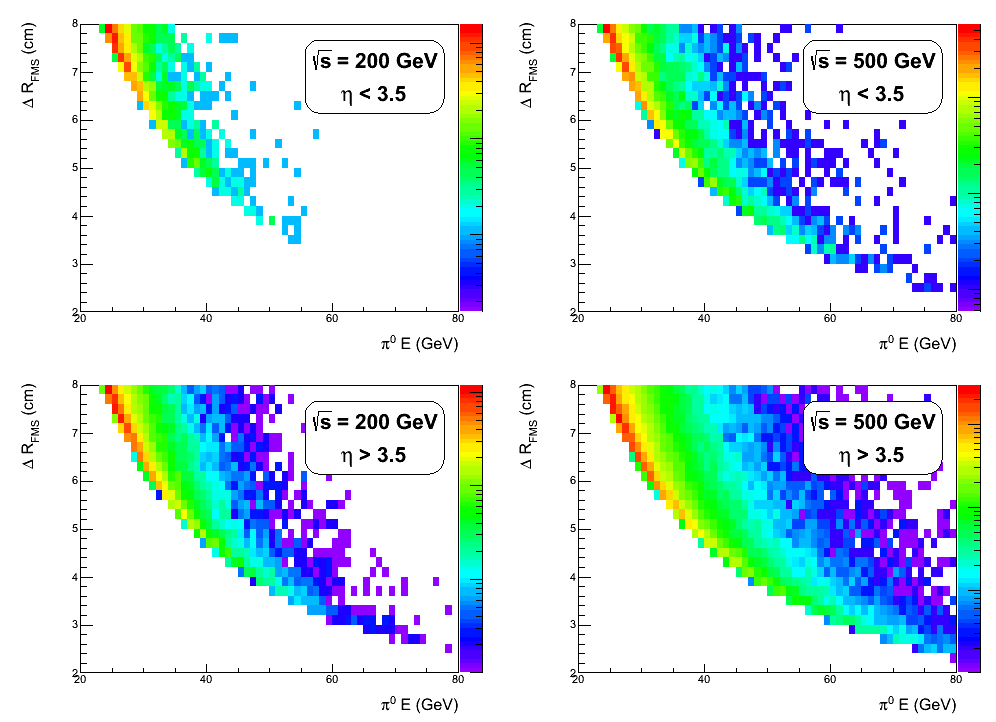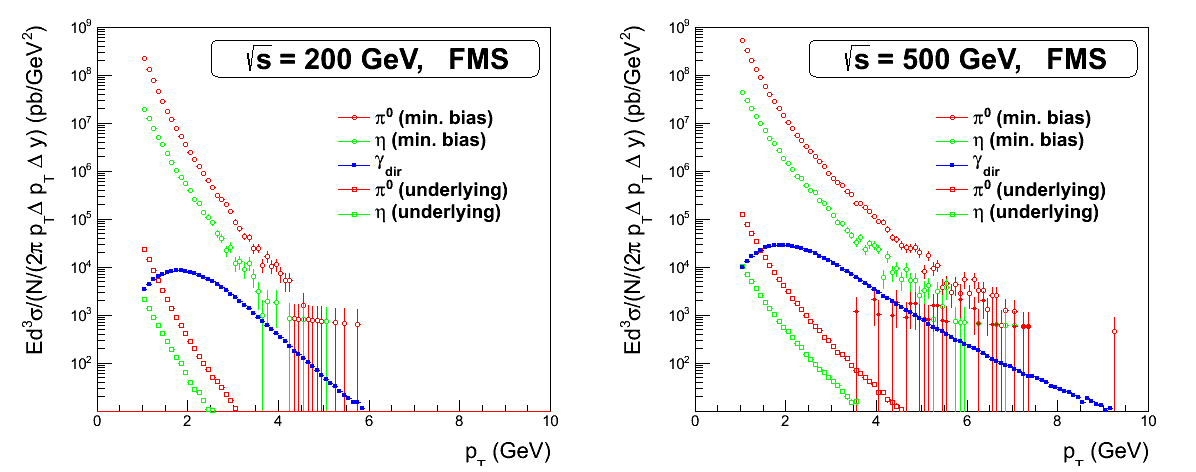- oleg's home page
- Posts
- 2024
- 2023
- February (1)
- 2022
- 2021
- 2020
- 2019
- 2018
- 2017
- 2016
- December (2)
- November (1)
- October (2)
- August (1)
- July (1)
- June (3)
- May (2)
- April (3)
- March (4)
- January (1)
- 2015
- 2014
- December (2)
- October (2)
- September (1)
- August (1)
- July (3)
- June (1)
- May (3)
- April (2)
- March (2)
- February (1)
- January (1)
- 2013
- My blog
- Post new blog entry
- All blogs
PYTHIA studies for direct photon measurement at forward rapidity
Comparison of PYTHIA Tune(100) with NLO calculations (Vogelsang 2007) at forward rapidities and center-of-mass energies of 200 and 500 GeV.
The direct photon spectrum only includes the prompt contribution without additional fragmentation photons. The fragmentation photons are of the same order at large transverse momenta and will dominate at low pT.
The simulation is in good agreement with the calculations, similar to a previous study in www.star.bnl.gov/~eca/pp-pA-LoI/ANRev2.pdf

Merged clusters from two-gamma decays of neutral pions are a problem when they can't be distingushed from high energy single photon signals.
The opening angle is smallest for symmetric decays and increases with the energy asymmetry of the photons. We plot the distance of the incident photons on the surface of the FMS versus the pion energy. The FMS tower sizes are 5.8 cm in the outer region, and 4.0 in the inner region, respectively. The Moliere radius of PbGl is 3.5 cm.

Invariant cross sections for pions, eta, and direct photons in the acceptance of the FMS. Single particles are required to hit the FMS. For pions and etas, an additional fiducial acceptance cut is applied (based on the pseudorapidity).
The acceptance (1/rapidity range) is not properly corrected (mainly due to efficiency effects from the opening angle). Also, the branching ratio is not corrected for.
For the merging, the tower size is assumed as lower limit to resolve two clusters. Clusters from from eta decays do not merge in the relevant energy range. Especially at 500 GeV, the merged contribution from pion decays dominates over the direct photon signal. From the inclusion of preshower PS3, with a converter of 1 X0 thickness, one can expect an additional rejection of about 2 (see drupal.star.bnl.gov/STAR/blog/oleg/2014/feb/08/preshower-response-high-energy-photons).

The previous assumption is very conservative and will lead to cluster merging already at pion energies of 30 GeV. As has been shown in drupal.star.bnl.gov/STAR/blog/leun/2012/sep/17/fpd-photons-revisited (slide 17), one can use the major semi-axis in a cluster to identify single from two-photon clusters. Although the two cluster energies can not be separated, this is sufficient to reject such clusters from the analysis. In the following, it is assumed that a cluster separation of half of the respective tower size can be reconstructed. This assumption may be a little optimistic for the small towers, from which the majority of merged clusters comes (higher energies - and large p_z - fall towards high rapidities).
Further studies are necessary, to quantify the cluster properties for this approach.
- oleg's blog
- Login or register to post comments
